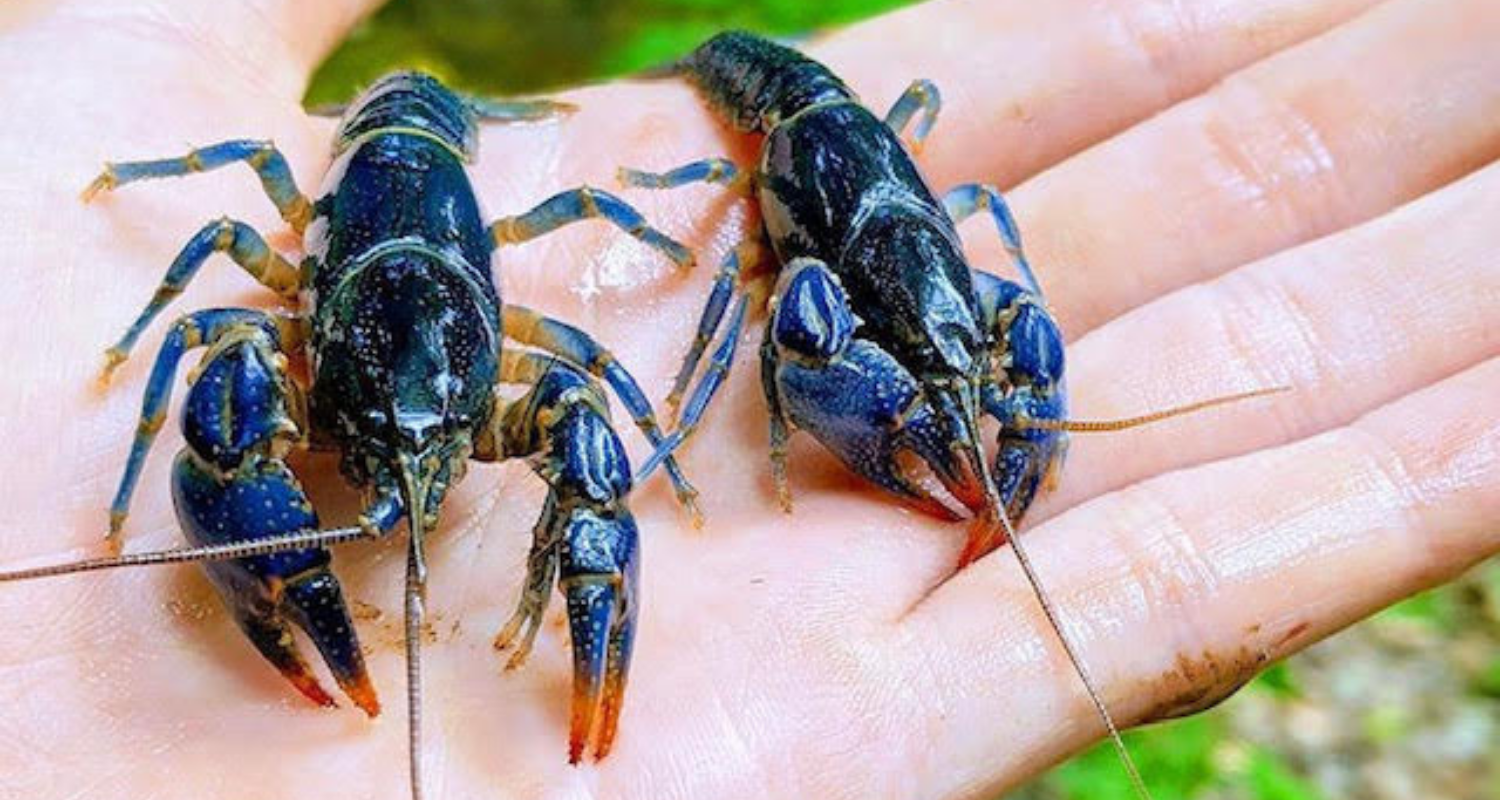Love is in the air and not just for you or me, but for animals as well! Finding someone to celebrate love with is not an easy task. Don’t we know it? Animals have their own methods and ways of finding a mate just as humans do. The Good Zoo at Oglebay houses many animals, all with their own way of finding that “special someone.”
Dr. Zachary Loughman, professor of biology and chair of West Liberty University’s Science Department, fully understands that animals in the wild know no bounds when it comes to finding the perfect mate. Some of which are much like humans.
“There are millions of ways mammals establish a mate, including body shape, fitness and things like that. Humans are a lot like that. Secondary sexual characteristics like antlers are in that category as well,” said Loughman.
“A lot of people think antlers are weapons, but if they were, then females would have them too. They are for attracting a mate.”
The Good Zoo offers the beautiful experience of firsthand contact with birds, who also relate to humans in the way of flirting.
“Male birds often have gaudy plumage with their bright colors, crests and peacocks are a good example of that. Birds will continue to mate once she has ovulated and is pregnant,” said Loughman.
While some animals are guided by looks and flirtation, others are a bit more practical when on the hunt for a spouse.
“Insects do a lot of chemical communication. The silk moth for example produces pheromones from its hindquarters and the males have receptors,” said Loughman.
“When those pheromones and receptors meet, the moths fly in a zig-zag to try and maintain that connection, so how the other looks is irrelevant to how they find one and other attractive.”
In addition to Loughman’s talent in the biology field, his specialty is in crayfish. He is internationally recognized as one of the most sought-after crayfish experts in the field. When it comes to “wooing” a potential mate, crayfish use a very… unique tactic.
“Crayfish pee out of their face, which has estrogen and testosterone. So, when crayfish are ready to mate, they pee on each other to determine whether or not the other is male or female and go from there,” said Loughman.
As you can tell, animals have all sorts of unique tricks up their sleeve when gaining the attention of a mate. Loughman can attest, love is not a game for the faint of heart—even if you are an animal.
“The concept of love is tricky when it comes to monogamy. There are several mating systems, including polygamy: one male with multiple females or one female with multiple males. Then there is just mating with whatever you end up bumping into and most of nature is that,” said Loughman.
“In theory, humans do a pattern of monogamy, which is present in nature, but a few factors come into play when it does take place. You have to raise your young in that way and they have to see both parents in the process. Red foxes and coyotes do this.”
The Good Zoo at Oglebay boasts the Patagonian cavy, a large South American herbivore, that also mates for life. Other animals at the Good Zoo that stay with their “forever partner” for life include the cotton-top tamarin primate, white-naped cranes and the bald eagle.
Environmental consultant Greg Myers says the Good Zoo is his go-to place when finding a safe haven for injured wildlife.
“I believe Oglebay’s Good Zoo has a really good variety of animals; it is a great place to bring your kids for learning experiences. I always take injured wildlife like red-tailed hawks hit by cars there. Their staff and scientists are great people and knowledgeable,” said Greg.
“They help conserve local species like the hellbender, which exist in Wheeling Creek and Buffalo Creek locally. This is a great place to take your kids, not only to wear them out, but as an educational experience that will help them develop. I believe this is the greatest accomplishment zoos contribute to the public; education and child development.”
While romantic love is wonderful and enjoyed all throughout the year at the Good Zoo, platonic love exists in animals as well. Donkeys, also featured at the Good Zoo, create strong bonds with their pals and will spend much time alongside them whenever possible.
According to Loughman, once monogamous animals give birth to their young, they will share the responsibility of taking care of them.
“Mom and dad will take turns with the kids and lots of birds practice monogamy too. Some biologists claim that male foxes realize when females get excited when the male brings a particular prey home,” said Loughman.
“Much like my wife enjoys peanut M&M’s and yeah, I could get her a PayDay, but I know that isn’t what she prefers. It’s much like that.”
Animals will do this to make their mate happy and additionally do it to keep things interesting.
“You can see with some animals they will start to produce more spats as time goes on because they are only with one mate. They are with each other for long periods of time, so they take that extra step in their exchanges,” said Loughman.
Myers agrees with Loughman in that it all depends on the type of animal whether there is a “spark” of some sort.
“It depends on the species. Dogs, species similar to them, including mammals and birds, experience similar emotions that humans have,” said Myers.
“I know they fall in love, experience love, and show it. Animals that are not sentient beings and have less developed brains, like ants and earthworms, will likely reproduce just to reproduce. They don’t have the genetic coding to experience the physiochemical emotions that we have. It’s hard to even understand our own emotions, let alone animal emotions.”
While monkeys, dogs and cranes all have fascinating ways of what we would say is the equivalent to dating and marriage, Loughman believes animals that are much smaller have a more compelling approach.
“I think it is crazy how people are interested in foxes and birds and how they come together because it is incredibly boring,” said Loughman.
“Arthropods maintaining populations is crazy though. Male praying mantises offer themselves as a sacrifice to the female. The female then rips off their heads. They are still able to mate because the male has a bunch of little brains still scattered all over his body. Evolution has made praying mantises crazy,” said Loughman.
The Good Zoo also boasts an indoor aquarium, complete with a children’s section attached. Fish tend to have a very straightforward way of finding a mate, but cuttlefish are unique in their own right.
“Cuttlefish have also evolved to maintain population in a crazy way. These fish look a lot like squid, but they definitely are not. They are very intelligent when it comes to mating and they actually have a season for it,” said Loughman.
“They congregate near rocks and the big males project their posture and are very much the big, tough jocks in this scenario. These males compete much like two big guys at a bar would. Smaller males, however, cannot use their size obviously, so they use their brains to find a mate.”
According to Loughman, the smaller males will pretend to be females, which causes them to be thrown into the group of female cuttlefish by the stronger males.
“Once the small male is there, he will then mate with a female. You’d think that a small percentage of these geeky cuttlefish would reproduce, but a lot of fathers are these smaller guys—50% of them in fact,” said Loughman.
In comparison, the macaw bird is devastatingly loyal to its mate and will protect it at all costs.
“I believe certain species of birds like macaws, who mate for life, experience a simpler and purer version of love than humans. I’ve been in a Costa Rican animal sanctuary enclosure where two mated macaws would randomly attack you while you’re feeding them and afterwards would show affection to each other. I envied and appreciated that,” said Myers.
“Love is such a complex emotion. It is a combination of basic emotions—joy, fear, sadness, disgust, and anger. Anyone who has experienced love has felt every one of these emotions while in love.”
The Good Zoo at Oglebay protects and presents animals that represent all facets of love and friendship just like humans.
There are over 50 species of animals with almost half of them being rare or endangered at the Good Zoo as well.
Whether it is platonic or romantic love, grab your special someone and spend Valentine’s Day at the Good Zoo and learn all about how animals are much like us.
• With a background in journalism and being a true Wheeling native, Jessica Broverman was destined to work with Weelunk. She holds a degree in journalism with a minor in criminal justice and works with Williams Lea Tag as a legal proofreader. When she isn’t typing away for Weelunk or WLT, she is enjoying a coffee at one of her many favorite spots in Wheeling, spending time with friends, or having fun with her husband Zachary and their two cats, Proctor and Max.










